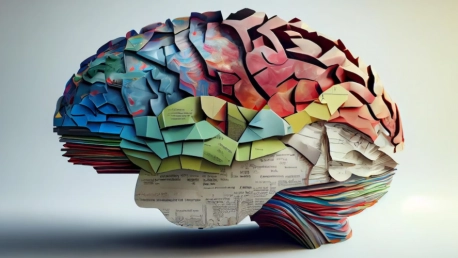“Education then, beyond all other devices of human origin, is the great equalizer of the conditions of men, the balance-wheel of the social machinery.” Horace Mann eloquently sums up the opportunity education offers to society; inclusivity, equality, and a level-playing field.
In a post-pandemic society, achieving an inclusive and equitable approach to education may seem more distant than ever, as the impacts of COVID-19 on teaching and learning are still being uncovered and unpacked.
What’s become glaringly obvious, though, is that we cannot continue with business as usual. Education as we know it has been disrupted, exacerbating inequality and eroding hard-won gains into meaningful education. In Texas, close to 67% of learners in the third grade have not grasped the literacy skills required for their level, and this is further compounded for students from disadvantaged backgrounds.
To truly build the 21st century classroom; one that is inclusive, cognisant of context and equitable; to take strides toward Horace Mann’s vision, a new kind of education must be built into the mainstream, and neuroeducation scientists think they may have the solution.
What is neuroeducation?
Neuroeducation sits at the intersection of neuroscience, psychology, and education. At its core, neuroeducation seeks to understand how the brain approaches learning and the processing of new information. Working hand in hand with educators, educational psychologists and related professionals, neuroeducation specialists devise optimal methods for teaching and learning.
Neuroeducation scientists believe that education can and should be adapted to meet the emerging needs of learners. This means an overhaul of teaching methodology, learning and study skills, as well as assessments. We only need to look at the stats of the education system today to understand that suggesting this kind of drastic change may very well be what is required to bridge the gap.
Classrooms have become more diverse and this diversity is not just limited to socioeconomics, gender, and race. According to the Organisation for Economic Co-operation and Development (OECD), the prevalence of neurodiversity is forcing education professionals to rethink classroom strategy and dynamics. The OECD advocates for a more inclusive approach to cater to the steadily increasing numbers of students with neurological diagnoses such as attention deficit hyperactivity disorder (ADHD) and autism spectrum disorder (ASD).
For learners with ADHD, rote learning and lecture-style teaching can be especially challenging, as they rely heavily on working memory and sustained attention—, two deficit areas forin which those with ADHD are deficient. While some may argue that many learners with ASD excel in rote learning, it is often at the expense of other skills like critical thinking, problem-solving, and social development.
But it’s not just the neurological aspects of education that we have to contend with; there are also the gaping holes created by two years of a global pandemic. Education nonprofit, The 74, conducted a survey across 800 schools, which found that 80% of public educatorsschools expressed concern over “stunted behavioral and socioemotional development” in learners. Educators are fighting against significant increases in classroom misconduct and disruption, rowdiness, tardiness, and the use of cell phones and devices.
In creating the classroom of the 21st century, inclusivity and innovation are required to meet the needs of all students, and neuroeducation has been at the forefront of deriving these solutions.
What does neuroeducation entail?
Neuroeducation is one of the most interdisciplinary and collaborative fields of science. Because of this, drawing on best practices includes a multitude of interventions. With over 30 years of studies into neuroeducation, four key areas have been highlighted as the pillars of learning in the brain:
- Brain plasticity
- Mirror neurons
- Emotions
- Multisensory learning
Essentially, if we are to move education forward into this brave new space, these four things must be present for learning to be equitable, inclusive, impactful, and meaningful.
Brain plasticity refers to the brain’s ability to adapt, and build new connections and neural pathways.
Each time we learn a new skill or concept, our brain is hard at work creating new neural pathways. In advocating for neural plasticity in education, scientists encourage a more hands-on and active approach to teaching and learning. A good example is learning to drive a car. You may practice the theory of this over and over again, and while the theory is critical, the experience of practicing your driving skills is what gives you confidence. Over time, your brain develops the neural pathways and your skill improves!
Mirror neurons are important for us to understand the world around us. As the name suggests, we do this best by mirroring what we see. Seeing an example of how to do something, activates our mirror neurons, which fires up new neural connections.To go back to our analogy of acquiring the skill to drive, think about how much you already knew about driving just from observation; you know where your feet go, where your arms should be positioned, the purpose of a windscreen wiper, etc. Neuroeducation stresses the importance of mirror neurons in overcoming learning challenges, especially when introducing new skills.
It would come as no surprise to anyone in the education sector that emotions are a major factor in learning. Neuroeducation has proven that the brain needs to be stimulated to find work exciting andto carry out effectively learning. Here, the experts suggest that learning should be novel, surprising, and creative to invoke curiosity in learners. Teachers are upfighting against waning attention spans due to development, social media, and neurological disorders. Gamification of learning material is just one example of how educators can make learning fun, promoting optimal brain health for students across the board.
Neuroeducation has also uncovered that the brain is positively stimulated by multisensory learning.A multisensory approach has been proven to be invaluable to neurodiverse learners and those with learning disabilities. Incorporating visual, auditory, kinaesthetic (physical activity/movement), tactile or olfactory and gustatory (smell and taste) elements into learning can help students better grasp concepts.
Conclusion
It is difficult to imagine that Horace Mann was alive in the 1800s,1800s when his words are still so relevant today. An inclusive, equitable education system is attainable, and something we should be striving desperately for. Not just for the sake of ethics and morals, but because the children of today are the leaders of tomorrow.
Equipping young learners with the necessary tools to be creative, critical thinking, and problem solvers is in our best interest. While experts in the field of neuroeducation can provide studies and research into optimal teaching and learning, it will take the collective efforts of policymakers, school governing bodies, parents, educators, and indeed the learners themselves, to find a new equilibrium in a post-COVID world.
Neuroeducation is a step toward ensuring that the 21st century classroom is a space where every learner can thrive.









